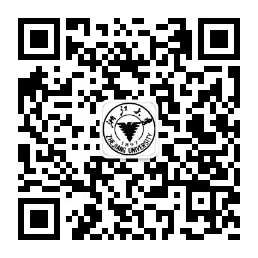Centre for Multimodal Critical Discourse Studies
Background
Multimodality is a growing theory of communication based mainly in linguistics, but which offers exiting new tools for the study of all kinds of communication, including images, document design, webpages, advertisements, films, social media, etc. Several subfields have developed in Multimodality. One of these, Multimodal Critical Discourse Studies, has been developed and led in particular by Prof David Machin, whose work on document analysis is used and cited by scholars around the world. He has published extensively on this topic and gives plenary talks and major conferences around on this disseminating the value of this approach.
At present, around the world, a number of multimodal research centers are being established, each taking its own specialist approach. There is a plan now, led by an Australian University, to create a digital hub to link these centers, as a way to create research links, plan events and other kinds of collaborations. David Machin has been asked to participate in this network, which also involves other leaders in the field. For this we need to have a center in the School of International Studies. This can also help to bring local staff, researchers and PhD students into this international research community.
The Centre’s contribution to the School
The Centre for Multimodal Critical Discourse Studies will link and cross over with existing research in the School of International Studies including in areas of legal discourse, heritage studies and translation. The aim would be to include colleagues and PhD students from across these areas of interest with a view to developing research ideas, events and publications.
Research focus
To begin with there will be four research themes which the Centre will address. These are: institutional communication, digital technologies in administration systems, food marketing and regulation, social media and civic communication.
Institutional Communication: In many societies there have been shifts to using systems of performance management across private and public institutions. This has been done in the name of increases in quality, outputs, transparency and value for money. Multimodal Critical Discourse Analysis provides excellent tools for researching the documents used to implement and communicate these changes, with a view to revealing advantages and problems.
Digital technologies in administration: It is not becoming commonplace to use digital systems to manage all parts of the processes of institutions and organizations. This is assumed to increase efficiency, transparency, the possibilities to measure and simply carries the value of being ‘modern’ and associations of ‘science and innovation’. Yet less consideration is given to how such systems shape and give new meanings to what we do, to the nature of the processes themselves and to forms of professional and intra organisational interactions. Multimodal Critical Discourse Analysis offers a set of tools by which such instances can be analysed in detail.
Food marketing and regulation: While much international food regulation controls how food companies can describe their products in terms of language, there is room for maneouvre both in language and especially in terms of visual design used to present the meaning of the product to consumers. Again Multimodal Critical Discourse Analysis offers tools to detailed analysis of the complex and varied meanings that are loaded onto food products, often which serve to confuse and manipulate customers.
Social media and civic communication: Social media have been credited as offering new forms of potential for publics to engage in discussions about matters of wider societal significance. And many success stories have been heralded in the case of women’s rights, black movements, etc. However, many also point to the grave limitations of the kinds of expression and more fragmented discussions that tend to take place. In particular here the centre will be interested in how social issues such as racism have been dealt with on social media in the US and Europe. The research seeks to identify some of these shortcomings.
The aim of the Centre:
1. To provide a hub of research in this area which can link to other international multimodal centres in Australian, Germany, South Africa, UK Denmark and the USA.
2. To create an environment for a group of scholars in the school, including senior and junior staff who can work together on research projects which can link to the international communities.
3.Use this as a vehicle to showcase the work that is being done here in multimodality and the journal Social Semiotics which carries research in this area.
4. Help to build and intellectual environment into which we can bring PhD students.
5. Create a hub through which we can invite speakers and visiting scholar and in the context of which we can hold scholarly events.
Director
David Machin
Members
Gwen Bouvier, Zhejiang University
Theresa Catalano, Nebraska University
Le Cheng, Zhejiang University
Goran Eriksson, Orebro University
Adam Jaworski, The University Hong Kong
Theo Van Leeuwen, University of Southern Denmark
Tommaso Milani, Gothenberg University
John Richardson, University of the Sunshine Coast
Crispin Thurlow, University of Bern
Lyndon Way, University of Liverpool



